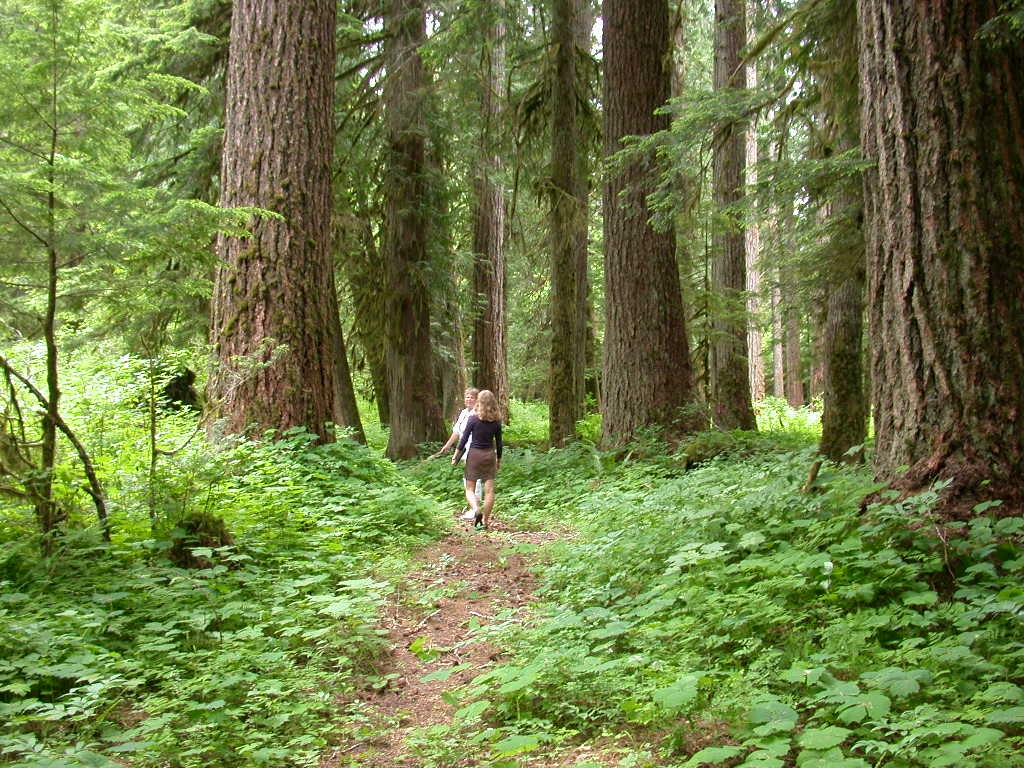Support strong Canadian climate journalism for 2025
During Biodiversity Day at COP27, Environment Minister Steven Guilbeault committed $855,000 to ensure non-profit environmental groups and Indigenous partners can participate at COP15, the UN biodiversity conference in Montreal. This funding levels the playing field as industries increasingly send their paid representatives to participate in the negotiations.
Indigenous and environmental groups will fight for policy agreements that put an end to resource extraction projects that target ecosystems with the greatest biodiversity. For example, the forestry industry has a long history of pursuing old-growth forests in low-altitude valleys where thriving ecosystems are home to an abundance of life. Wildsight has recently launched a campaign against logging in B.C.’s inland temperate rainforest where habitat destruction will threaten caribou herds.
To understand what is being lost in these remote regions, you simply need to visit Sumallo Grove and the Skagit River Trail in E.C. Manning Provincial Park. There you will find Sitka spruce, Douglas firs, western red cedars and western hemlock towering above as you walk along the riverside path. It’s a magical place that gives credence to the concept of shinrin-yoku, where people look to improve their health and well-being by “bathing” themselves in the sights, sounds and scents of a lush forest.
The park was named after Ernest Callaway Manning, B.C.’s chief forester from 1936 to 1941, who believed in the importance of setting aside natural areas for future generations. It’s one of the most popular provincial parks in B.C. and receives about a million camping and day-use visitors per year.
With the help of the then lands minister Arthur Wellesley Gray, Manning was instrumental in establishing four provincial parks: Tweedsmuir, Hamber, Wells Gray and the park dedicated to Manning after he died in a plane crash in 1941.
As chief forester, Manning was well aware of the destructive forest management practices of the day. He championed conservationist policies at a time when the Great Depression made job creation high on the political agenda. Many in the logging industry feared his progressive views on how forests should be managed.
In his 1939 report to the B.C. legislature, Manning warned, “We are over-cutting in the Coast District. We are turning capital into revenue. We are creating barren lands. Adequate provision has not been made for the preservation of our forests as a permanent resource. In a word, we are liquidating our greatest asset and leaving an impoverished heritage to our children.”
More than 80 years later, the forestry industry has plundered the majority of the most valued old-growth forests in B.C. Despite the hard-fought protection of over 10 million hectares of forest, a majority of the largest and most productive old-growth is long gone. These ecosystems will not return for centuries.
A research article by Jordan Benner and Ken Lertzman indicates that since 1970, modern old-growth logging comprised 87 per cent of all timber harvesting in the studied region. Recent policy changes have improved long-standing forest management practices, but harvesting still continues with a mandate to maximize profits.
Annual harvest areas steadily increased in size, while resource depletion resulted in a decline in the availability of high-value and easily accessible forests. After major policy changes in the 1990s, the size of the annual harvests began to drop, while the rate of resource depletion decreased.
Despite this positive trend, the study confirmed that the “high-grading” practice of seizing the most valuable timber is still a driving force behind forest management in B.C. The Ministry of Forests has failed to introduce a new paradigm where ecosystem health takes precedence over timber value.
It is by economic imperative that forestry corporations will always monetize the most lucrative forest assets with little consideration for the future generations that will be deprived of the benefits of biodiversity, watershed health and carbon sequestration.
At COP26 in Glasgow last year, 137 countries committed to halt and reverse forest loss and land degradation by 2030. The pledge was backed by $12 billion in public funding and $7.2 billion in private funding. In addition, CEOs from more than 30 financial institutions accounting for more than $8.7 trillion of global assets committed to eliminate investment in activities linked to deforestation.
The commitment is significant, but in many countries, including Canada, forests lost to timber harvesting and wildfires are not considered deforestation because the land use hasn’t changed. The accounting is suspect when it excludes clear-cutting centuries-old stands of trees that are replaced with tiny seedlings. Clearly, something has been lost, but that loss is not being counted.
Manning foresaw the destruction of our global forest assets in the interest of short-term profit. He intuitively understood these natural assets had long-term value that needed to be protected, but we are now learning their importance is far greater than even he imagined.
The World Resource Institute’s article by Frances Seymour concludes, “A growing body of research reveals that forests interact with the atmosphere in many ways other than through the global carbon cycle, affecting rainfall and temperatures from global to local scales. In fact, forests’ non-carbon effects are not only essential for fighting climate change, but for food and water security, human health and the world’s ability to adapt to a warming planet.”
We know these ancient forests are worth more standing. We understand the consequences of losing them. There is a sense of urgency for change. But standing in the way is the hesitancy to act quickly and decisively. This same fear prevents the emergence of binding agreements from international negotiations like COP15.
Without change, progress is impossible. Biodiversity can only be protected when we start making ecosystem health a priority over economic gain. Otherwise, the current economic model will consume nature until there is little left of its most valuable assets.
Rob Miller is a retired systems engineer, formerly with General Dynamics Canada, who now volunteers with the Calgary Climate Hub and writes on behalf of Eco-Elders for Climate Action.






Comments